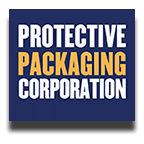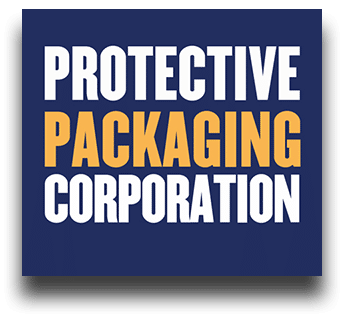(THIS IS AN EXCERPT OF MIL-DTL-17667 DETAIL SPECIFICATION AS PROVIDED BY THE US GOVERNMENT. FOR THE COMPLETE AND CURRENT DOCUMENT, VISIT THE US DEPARTMENT OF DEFENSE ASSIST.DLA.MIL)
INCH-POUND
MIL-DTL-17667E
21 April 2005
SUPERSEDING
MIL-P-17667D
10 September 1980
DETAIL SPECIFICATION
PAPER, WRAPPING, CHEMICALLY NEUTRAL (NON-CORROSIVE)
| REACTIVATED AFTER 10 FEBRUARY 2005 AND MAY BE USED FOR NEW AND EXISTING DESIGN AND ACQUISITIONS. |
This specification is approved for use by all Departments and Agencies of the Department of Defense.
1. SCOPE
Scope. This specification covers chemically neutral, non-corrosive wrapping paper used for packaging military supplies and equipment.
Classification. The types of chemically neutral, non-corrosive wrapping paper are as follows:
Type I – Flat
Type II – Creped
2. REQUIREMENTS
First article – When specified, a sample shall be subjected to first article inspection in accordance with 4.2.
Material – Neutral wrapping paper shall be made from sulfate pulp. If reclaimed fiber is used, then traces of other fibers shall be not greater than 5 percent.
– Recycled, recovered, or environmentally preferable materials. Recycled, recovered, or environmentally preferable materials should be used to the maximum extent possible, provided that the material meets or exceeds the operational and maintenance requirements, and promotes economically advantageous life cycle costs.
– Form. The wrapping paper shall be furnished in flat cuts or in rolls as specified in the contract or order.
– Flat cuts. Flat cut sheets shall be 24 by 36 inches with a tolerance of ±1/8 inch in each direction.
– Rolls. Rolls shall be either 24 or 36 inches wide with a tolerance of ±1/8 inch. Roll length shall be 100 yards or multiples thereof. Roll length tolerance shall be +6 inches and -0 inches per 100 yards. The roll material shall be uniformly wound on nonreturnable cores. The core inside diameter shall be not less than 3 inches with a tolerance of +1/16 inch. The length of the core shall be equal to the width of the roll material with a tolerance of +1/8 inch. The core shall be rigid to prevent distortion of the roll during use and shipment conditions. Each roll shall be restrained to prevent unwinding. No roll shall contain more than two splices (3 pieces) and no piece shall be less than 20 yards in length. Splices shall be even and neat across the entire width of the roll and shall not come apart during unwinding of the roll. Splices shall be flagged at both ends of each splice with colored markers.
Basis weight – The wrapping paper shall be furnished in the basis weights specified in table I .
Identification – Wrapping paper shall be marked by continuous longitudinal blue stripes. The color shall conform to FED-STD-595, color number 35231. Minimum width of stripes shall be 1/8 inch. Spacing between stripes shall be 6 inches ±1/2 inch. Stripes shall be applied either during manufacture or prior to creping. Stripes shall be parallel to each other and to the machine direction of the material. The stripe color shall be distinct and permanent.
Workmanship – The wrapping paper shall be uniform, free from holes, tears, sharp creases, cuts, or other imperfections.
Performance requirements – The wrapping paper shall meet the performance requirements specified in table I, when tested in accordance with 4.5.
TABLE I. Performance requirements.
|
Property |
Requirement |
Test paragraph reference |
| Basis Weight | Stipulated basis weight verified | 4.5.1 |
| Bursting Strength Type I 30 Basis wt 50 Basis wt 80 Basis wt Type II 35 Basis 50 Basis 70 Basis |
21 pts (min) 35 pts (min) 56 pts (min)14 pts (min) 20 pts (min) 27 pts (min) |
4.5.1 |
| Tearing Resistance Type I 30 Basis wt 50 Basis wt 80 Basis wt Type II 35 Basis 50 Basis 70 Basis |
45 grams (min avg) (each direction) 90 grams (min avg) (each direction) 160 grams (min avg) (each direction)90 grams (min avg) (each direction) 130 grams (min avg) (each direction) 160 grams (min avg) (each direction) |
4.5.1 |
| Tensile Breaking Strength Type I 30 Basis wt 50 Basis wt 80 Basis wt Type II 35 Basis 50 Basis 70 Basis |
10 lbs/in. width (min avg) (each direction) 18 lbs/in. width (min avg) (each direction) 35 lbs/in. width (min avg) (each direction)8 lbs/in. width (min avg) (each direction) 10 lbs/in. width (min avg) (each direction) 18 lbs/in. width (min avg) (each direction) |
4.5.1 |
| Elongation (type II only) | Not less than 20% elongation in creped direction | 4.5.1 |
| Contact Corrosivity | No induced corrosion in the contact area | 4.5.1 |
| Spring Back Type I Type II |
Less than 70° of spring back in each direction (avg) Less than 70° of spring back in creped direction only (avg) |
4.5.2 |
| Hydrogen Ion Concentration | pH not less than 6.5 and not greater than 7.5 (avg) | 4.5.3 |
6. NOTES
(This section contains information of a general or explanatory nature that may be helpful, but is not mandatory.)
Intended use – The chemically neutral, non-corrosive wrapping paper covered by this specification is intended for use in specialized military methods of preservation. MIL-DTL-17667 is a premier material required for the Navy’s Prime Program. It provides a neutral wrap or cushioning material for unique Navy plastic disposal requirements in a marine environment.
Acquisition requirements – Acquisition documents should specify the following:
a. Title, number, and date of this specification.
b. Type of material.
c. When first article inspection is required.
d. If material should be furnished in rolls or flat cuts, and the required size of each.
e. Basis weight of material.
f. Packaging requirements.
First article test samples – Samples for first article inspection should consist of a sample of the wrapping material which has been produced by the contractor using the same production process, procedures, and equipment that is going to be used in fulfilling the contract.
Conformance inspection lot – For purposes of sampling, an inspection lot for examinations and tests should consist of all material made by the same process from the same components by one manufacturer and submitted for delivery at one time.
Reclaimed fiber – Reclaimed fiber is fiber collected from solid waste, or from waste collected as a result of an agricultural or manufacturing process, but not including material generated from and reused within the plant as a part of its own papermaking process. The papermaking process is the manufacturing process of producing paper up to and including the cutting and trimming of the machine reel into smaller rolls or rough sheets.
Subject term (key word) listing.
Corrosion protection
Packaging
Preservation
Changes from previous issue – Marginal notations are not used in this revision to identify changes with respect to the previous issue due to the extent of the changes.
Custodians: Preparing activity:
Army – SM Navy – AS
Navy – AS
(Project 8135-0743)
Review activities:
Army – AT, EA, GL3, MI
Navy – MC, OS, SA, SH
Other – DS
DLA – GS
NOTE: The activities listed above were interested in this document as of the date of this document. Since organizations and responsibilities can change, you should verify the currency of the information above using the: ASSIST Online database.

